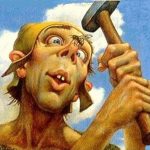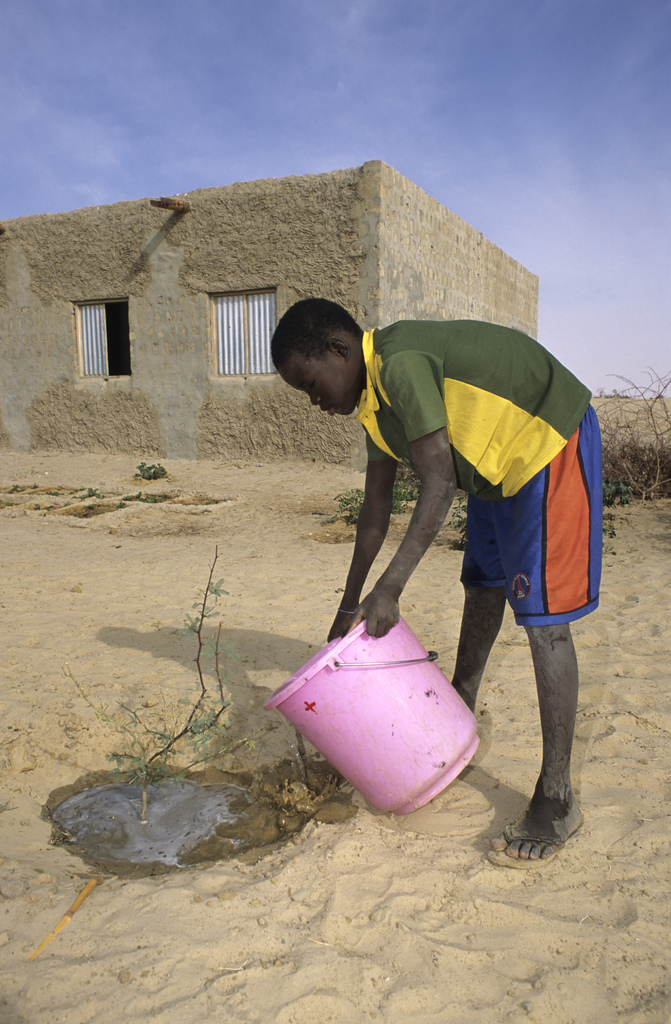
Chop and drop, that ….. nitro fixing thing a ma gig…
-
Chop and drop, that ….. nitro fixing thing a ma gig…
Posted by MartHale7 on June 24, 2023 at 6:01 pmhttps://www.youtube.com/watch?v=lURVIHJmBDQ
The most benefit I have seen from release of nitrogen into a plant form is beans being turned into compost on the compost heap, then feed to plant roots.
So….. If I follow this rabbit trail if we plant nitrogen fixing trees in our garden then that nitrogren in the roots of the nitrogen fixing trees will not be released until those nitro fixing trees die?
I have heard the mantra ” when chop and drop you are also pruning the roots at the same time” I would like to know of the evidence of this happening.
Logically it seems to me we should plant nitro fixing trees, then kill them so the nitrogen could be released back to the plants is my thinking…. Or…… We grow something that is high in nitrogen / protein like beans, grind them up fine and put them at our plant’s roots to feed them….
MartHale7 replied 1 year, 7 months ago 6 Members · 26 Replies -
26 Replies
-
I haven’t watched the video but based on your thoughts, I’m responding. I think I learned a long time ago, so not sure of how valid the knowledge is….It is my understanding that nitrogen-fixing plants do so through their roots as they grow. That’s why peas and corn are good companions….the peas fix nitrogen into the soil and the corn benefits from it. Once they die, the benefits are gone except that the fiber of the plant will feed the soil if it is returned back to the soil.
I like this fellow and used to follow him, but some of what he says either doesn’t apply to southern gardens or the conclusions don’t always follow good logic. I think he is very helpful for folks that live farther north from us and I have recommended his channel a time or two. I’ll watch the video later.
-
Yeah, I have been working thru in my brain exactly why are they good companions?
Have we been going thru theses motions without testing it ourselves, and believing what the chart says that this works with that?
What makes a good companion plant, or guild, is it because someone saw the plants worked good together? Was it because the yield was higher? I have seen the charts, but wonder now what method was used to form them.
Does a nitro fixing plant generate nitrogen outside the nodule of the roots?
We use cotton seed meal for a nitrogen fertilizer, do other seeds have nitrogen like cotton seed that we could grind and use?
Love gardening as you are always looking for deeper answers.
-
Alfalfa is a good ground nitrogen source, I’d say better than cottonseed meal because that stuff is usually GMO and sprayed heavily – unless you have a good source. I love me some cotton flowers…. anyway… lol If you want something ground and heavily nitrogen, alfalfa is great. It also jumpstarts a compost pile like nobody’s business, even better than coffee grounds. Of course, I think they just approved a GMO alfalfa too, so…
-
Indeed it is, I have tried a few times to grow it hear. One thing I found interesting about alfalfa is you can grow it from cuttings, I was able to get it to root a few years back but have not been able to maintain it as of yet. 🙁
-
I used alfalfa pellets for horses in my garden one year, it seemed to work well for my plants, thus my desire to grow it.
-
I forget where you are? It’s really easy to grow in most areas. I was thinking about buying a bag or two of cheap alfalfa for backup, and growing a little patch in a few places in the flower beds along the house to soften the brick, add a little, what do the home shows call it, background interest. 🙂 Then it’s there for me to chop up into tiny pieces and compost or sprinkle around the real garden with other things too.
-
I am in Florida, I had it growing and returning in one area, then I forgot I planted it there then covered it up with a solar panel 🙁
I do keep trying, I bought a bag of alfalfa sprouts, and I am getting some to start, gotta keep trying…
-
-
-
Actually, I might say, there is a way to do both (and I did watch the video, have completed a Permaculture Design program, Soil Food Web course and more.
Plant your beans, or cowpeas next to the corn or whatever, but plant it thick. When they start to flower.. THIN them, Chopping say half and leaving half. That way you get the nitrogen-fixing (which actually the bean does -not- do, instead it is a specific bacteria in the nodule, hopefully), and get fruit.
-
I bought a video on organic gardening, and in that video the man planted beans, then turned in the beans, then he planted his desired crop on top of that.
In another book I read, they have a section of the garden set aside for growing nutrients like cover crops to feed the rest of the garden, much like chop and drop of permaculture.
Interesting your method to do both as you suggest, it does seem to be good to keep the food web going and also have a dying food supply for the crops. ( compost )
-
Its an option. When I have the time to really garden hard (meaning I can spend a lot of time in the garden) and have space, I plant my okra with a row of cowpeas on either side. I haven’t formally experimented with the thinning mentioned above (just thought about that technique) or even Okra with and without a cowpea companion, however, I believe in true Permaculture fashion, it does at least possibly give me multiple rewards (all of which are currently subjective, as there has been no formal, documented, peer-reviewed research.
1) Possible nitrogen fixation
2) Shading the ground to help it stay cooler
3) Shading the ground to reduce evaporation
4) Shading the ground as a cover crop
5) Additional food in essentially the same space”
6) Biodiversity
7) Seed saving, especially as I tend to grow varieties that are not the norm in this area. (Clay, Hog Brain, Tetapeche and others.)I have been taught (and still learning), and believe in the diversity of crops, techniques, and outputs of any effort.
-
This reply was modified 1 year, 7 months ago by
 Hippocrates_Garden.
Hippocrates_Garden.
-
This reply was modified 1 year, 7 months ago by
-
-
-
The man who runs Perma Pastures Farm has black locust trees planted among his fruit trees. He does not kill the black locust, but he keeps it pruned and uses the cuttings as fertilizer.
-
Yeah most who do permaculture use the chop and drop method. dying leaf mater does feed worms, and bacteria, and the wood will feed fungi in time.
-
-
I like Luke. But when he “goes against the grain” he can get kinda defensive and superior. That doesn’t happen too often, but this is one of those times.
Nitrogen fixing by legumes: Nodules on roots convert nitrogen in the air to nitrogen that the plants can use. The plants respirate (breathe in) nitrogen, bring it to the roots, root nodules produce an exudate that helps change that nitrogen to ammonia. Then it’s broken down into nitrates and nitrates, the latter being what commercial fertilizers use for nitrogen. So yeah, the nitrogen IS used by the plant that produces it. Yes, you can chop and drop and it’ll add nitrogen just like any other green plant breaking down. If you totally pull that plant up, roots and all, you’re taking all of the ability to convert. It stops feeding those microbes that help that nitrogen convert to ammonia. Essentially, those nodules are the milkshake that brings all the microbes to the yard. So yeah, once the plant flowers and produces fruit/seeds, it starts dying, because that’s what plants do. So of course, it won’t continue to convert atmospheric nitrogen.
Essentially, Luke is ignoring the whole living web of soil and all the intricate relationships. He’s technically right in some ways, but not in the big picture.
As far as what Billy and others do, planting large perennials (like black locust) will continue to convert nitrogen in the soil, helping everything around it, bringing the correct microbes in, etc. and it doesn’t stop, because it doesn’t stop producing. If the plant dies, though, the nitrogen production will slow and eventually stop without other input.
-
I do find it hard to isolate one aspect of a plant and say, it is because it is a nitrogen fixer that it is valuable to the other plants.
What if that plant enables certain fungi to live that help the other plants?
What if that plant brings up water from below and that waters other plants around it?
I have noted here in Florida that along the tree line you can look down and see the grass is greener under that line, it is my theory that the leaves above besides providing a micro climate, form dew in the morning and then drip water down to the grass below…
The interactions of this orchestra of instruments is indeed very intertwined.
-
Hi guys, I did watch his video later. I concede that he may be correct technically, but why do my black eye peas and corn make such good companion plants. The corn def yields better and is healthier. Maybe the tests don’t tell the whole truth:)
-
If it works keep doing it 🙂 I am always curious why it works, but it is very very hard to limit it down to 1 variable as we live in a very complex world.
-
-
Thank you for sharing that. When you look at the picture you can see how the crops are doing better near the tree. Now I wonder, what kind of tree is that? What crops do well near trees? Is there an optiminal distance from the tree that works best for crops?
-
Looking at this it is a combo of the old tree hay method of using trees for fodder, and pruning to optimize growth…. https://en.wikipedia.org/wiki/Farmer-managed_natural_regeneration
en.wikipedia.org
Farmer-managed natural regeneration - Wikipedia
Farmer-managed natural regeneration - Wikipedia
-
I found it on Ebay for $15.00 a pound shipped. I just ordered some.
Log in to reply.

